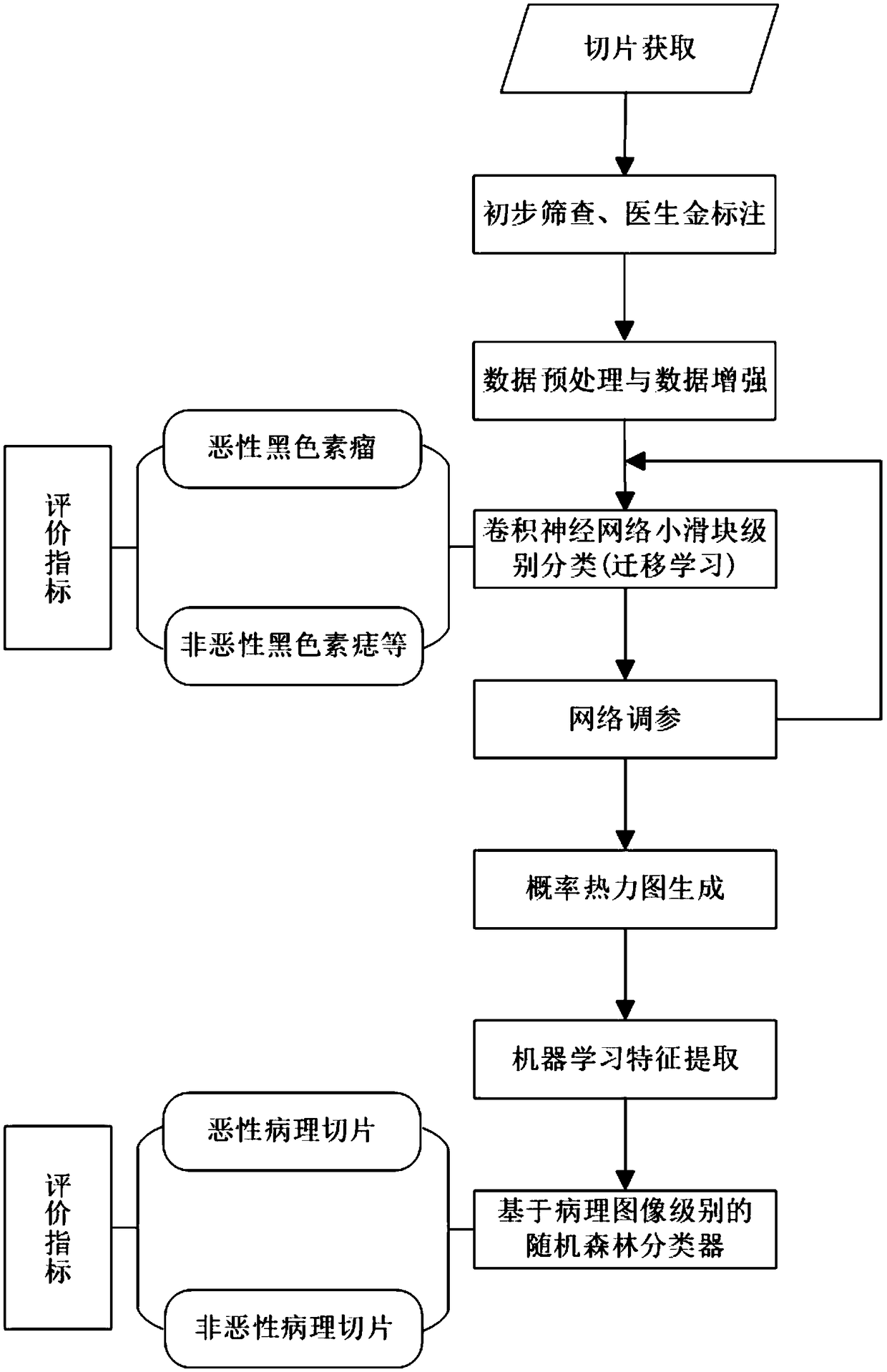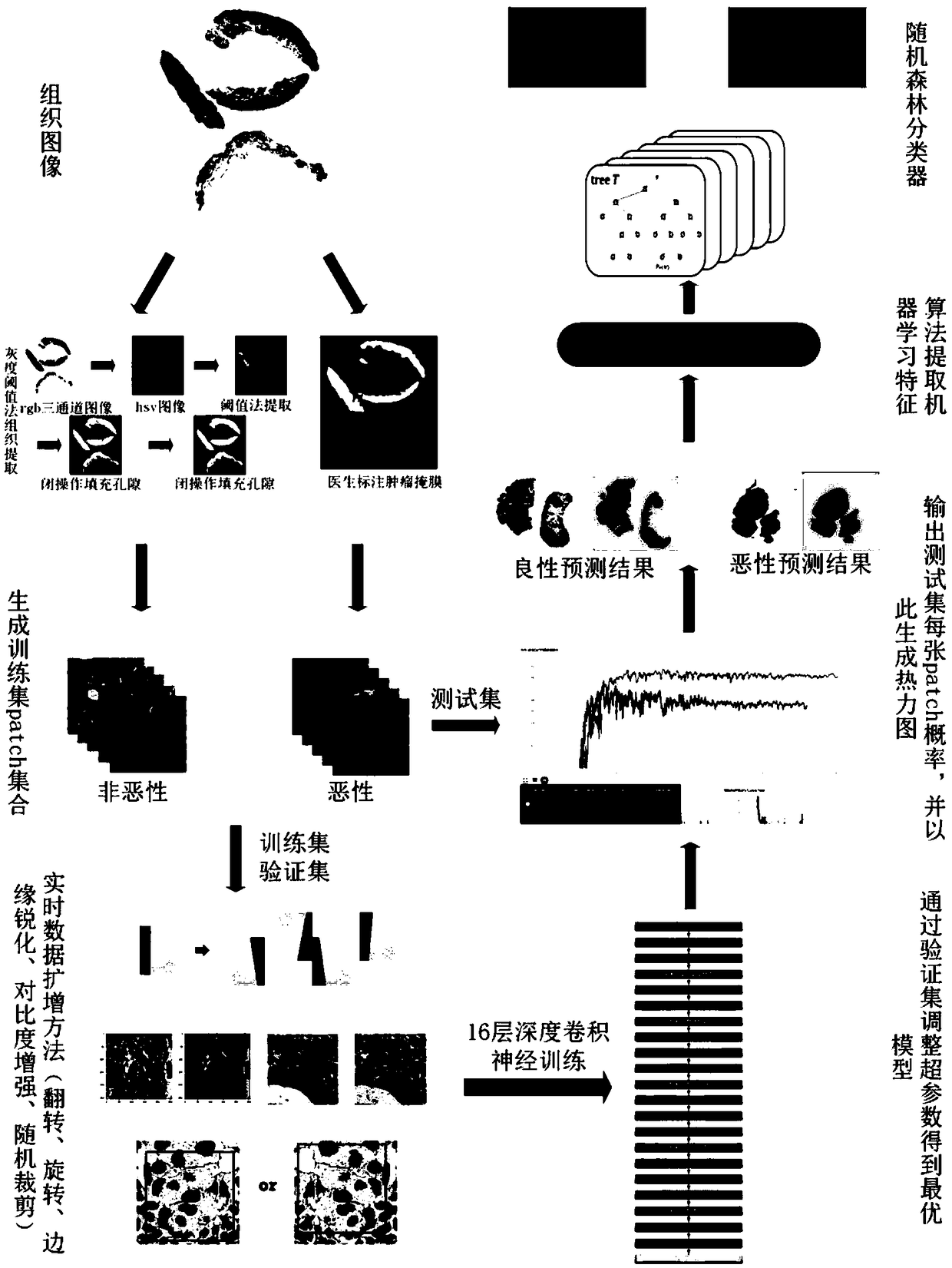Malignant melanoma and non-malignant melanin nevus classification method based on deep learning
A kind of malignant melanoma, deep learning technology, applied in the field of eye tissue pathological sections classified as malignant and non-malignant, can solve problems such as insufficient medical resources, and achieve the effect of high accuracy
- Summary
- Abstract
- Description
- Claims
- Application Information
AI Technical Summary
Problems solved by technology
Method used
Image
Examples
Embodiment Construction
[0030] The present invention will be further described below in conjunction with the accompanying drawings and specific embodiments.
[0031] The hardware environment used for implementation is: CPU Intel(R) Xeon(R) CPU E5-2630 v4@ 2.20GHz, GPU is NVIDIA K80, and the operating environment is python2.7 and TensorFlow.
[0032] Using a 16-layer deep convolutional neural network and a random forest classifier in series, the network has 5 sections of convolution, each section has 2 to 3 convolutional layers, and the last layer of each section is the largest pooling layer to reduce the size of the image size. The number of convolution kernels in each segment is the same, and the number of convolution kernels in the later segment is more: 64-128-256-512-512. Two concatenated 3×3 convolutions are equivalent to a 5×5 convolution, and 3 concatenated are equivalent to a 7×7 convolution. At the same time, the small convolution kernel structure in series has fewer parameters than the si...
PUM
 Login to View More
Login to View More Abstract
Description
Claims
Application Information
 Login to View More
Login to View More - R&D
- Intellectual Property
- Life Sciences
- Materials
- Tech Scout
- Unparalleled Data Quality
- Higher Quality Content
- 60% Fewer Hallucinations
Browse by: Latest US Patents, China's latest patents, Technical Efficacy Thesaurus, Application Domain, Technology Topic, Popular Technical Reports.
© 2025 PatSnap. All rights reserved.Legal|Privacy policy|Modern Slavery Act Transparency Statement|Sitemap|About US| Contact US: help@patsnap.com


